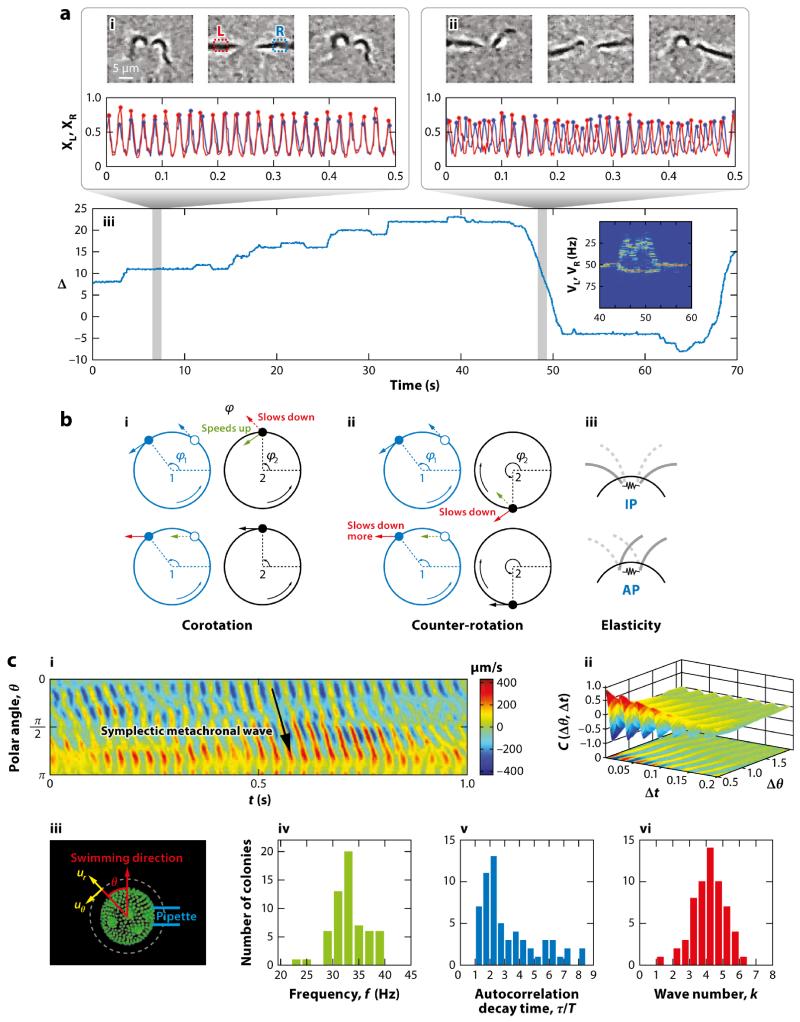FIG. 7.
(a) Synchronization in Chlamydomonas. (i,ii, top) Images from a high-speed video of flagellar beating in synchrony and during asynchrony, with interrogation windows for Poincaré sections in part i. (i, ii, bottom) Time series of left and right pixel intensities in windows. (iii) Time series of phase difference Δ over 70 s, showing periods of synchrony, slips, and drifts. (Inset) Fourier transform during transition from synchrony into drift and back. Panel a adapted with permission from Polin et al. (2009). (b) Mechanisms of synchronization. In the elastohydrodynamic mechanism, (i) corotation leads to in-phase (IP) synchrony, and (ii) counter-rotation produces antiphase (AP) locking. (iii) Elastic couplings can provide a competing effect. Panel b adapted with permission from Leptos et al. (2013). (c) Metachronal waves in Volvox carteri. (i) Space-time illustration of a radial component of the fluid flow measured near the colony surface. (ii) Correlation function of waves. (iii) Confocal microscope image of Volvox, showing the colonial axis and the radius for velocity components (dashed). Histograms of (iv) beat frequencies, (v) decay times of the correlation function scaled by the beat period, and (vi) the metachronal wave number for 60 colonies. Panel c adapted with permission from Brumley et al. (2012).

